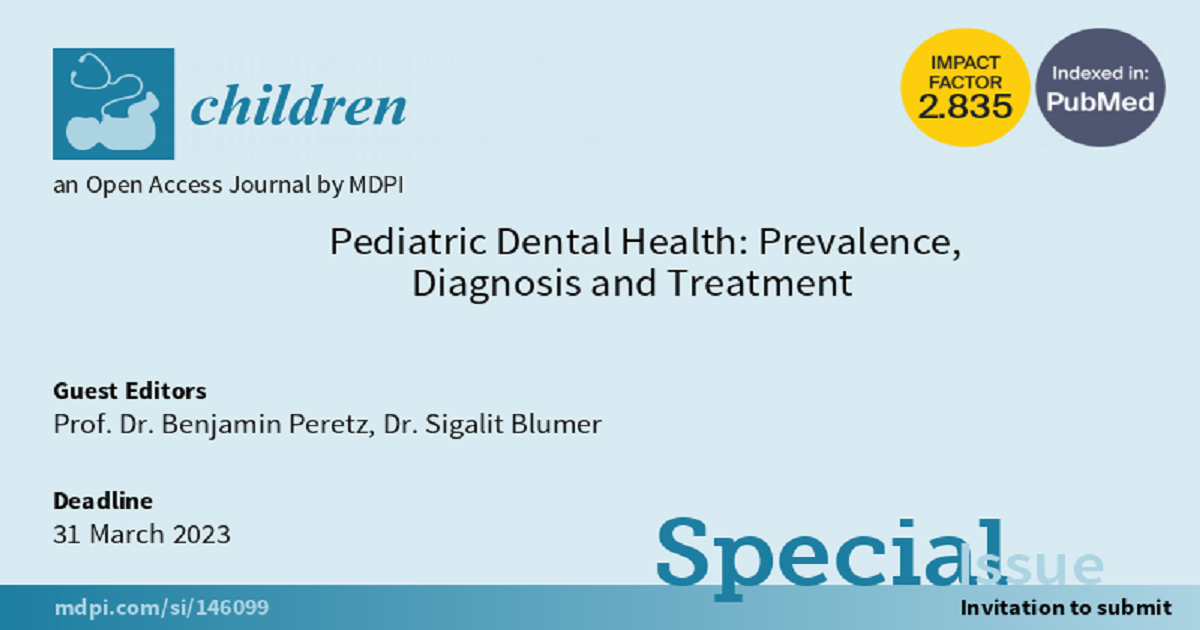Pediatric Dental Health: Prevalence, Diagnosis and Treatment
A special issue of Children (ISSN 2227-9067). This special issue belongs to the section "Pediatric Dentistry".
Deadline for manuscript submissions: closed (31 March 2023) | Viewed by 26488

Special Issue Editors
Interests: pediatric dentistry; community dentistry; caries prevention; oral health promotion; treatment of early and advanced caries lesions; behavior management
Interests: pediatric dentistry; community dentistry; caries prevention; oral health promotion; treatment of early and advanced caries lesions; behavior management
Special Issue Information
Dear Colleagues,
Pediatric dentistry is dedicated to the oral health of children from infancy through their teen years. Dental diseases are very common in children. They range from caries to malocclusion to include very rare and complex diseases of multidisciplinary interest. Pediatric dental health includes knowledge of the diagnostics, clinical and instrumental factors, pathophysiology, and preventive and therapeutic aspects of dental pediatric patients. The objectives to be pursued are the identification of advanced diagnostic pathways which can help to define the various types of oral diseases in the developmental age and the acquisition of specific skills for prevention, interception, and treatment.
The purpose of this Special Issue is to describe and update the therapies of pediatric dental diseases with the most recent research, also including rare dental diseases that require early diagnosis and systemic diseases with their manifestations in the oral cavity.
Prof. Dr. Benjamin Peretz
Dr. Sigalit Blumer
Guest Editors
Manuscript Submission Information
Manuscripts should be submitted online at www.mdpi.com by registering and logging in to this website. Once you are registered, click here to go to the submission form. Manuscripts can be submitted until the deadline. All submissions that pass pre-check are peer-reviewed. Accepted papers will be published continuously in the journal (as soon as accepted) and will be listed together on the special issue website. Research articles, review articles as well as short communications are invited. For planned papers, a title and short abstract (about 100 words) can be sent to the Editorial Office for announcement on this website.
Submitted manuscripts should not have been published previously, nor be under consideration for publication elsewhere (except conference proceedings papers). All manuscripts are thoroughly refereed through a single-blind peer-review process. A guide for authors and other relevant information for submission of manuscripts is available on the Instructions for Authors page. Children is an international peer-reviewed open access monthly journal published by MDPI.
Please visit the Instructions for Authors page before submitting a manuscript. The Article Processing Charge (APC) for publication in this open access journal is 2400 CHF (Swiss Francs). Submitted papers should be well formatted and use good English. Authors may use MDPI's English editing service prior to publication or during author revisions.
Keywords
- dental health
- oral pathology
- pediatric dentistry
- dental caries
- children
- treatment
- prevention







